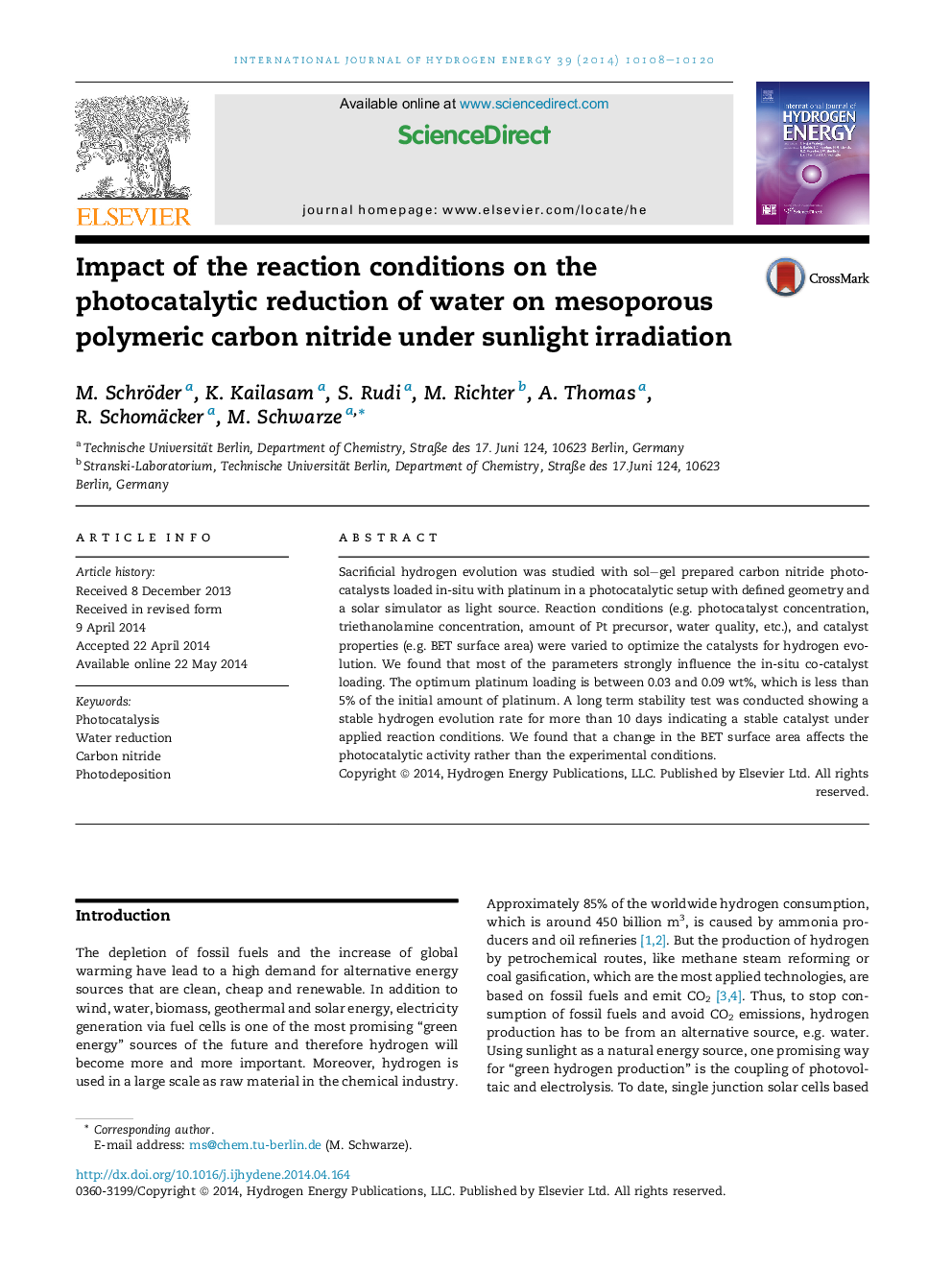| Article ID | Journal | Published Year | Pages | File Type |
|---|---|---|---|---|
| 1270362 | International Journal of Hydrogen Energy | 2014 | 13 Pages |
•Real platinum loading was determined after hydrogen evolution reaction by ICP-OES.•All reactions were performed with sunlight simulator (1000 Wm−2).•Optimum platinum loading is only 0.03–0.09 wt% (<5% of initial weight of Pt).•Triethanolamine as sacrificial agent influences co-catalyst deposition.•Catalyst found to be stable for >10 d.
Sacrificial hydrogen evolution was studied with sol–gel prepared carbon nitride photocatalysts loaded in-situ with platinum in a photocatalytic setup with defined geometry and a solar simulator as light source. Reaction conditions (e.g. photocatalyst concentration, triethanolamine concentration, amount of Pt precursor, water quality, etc.), and catalyst properties (e.g. BET surface area) were varied to optimize the catalysts for hydrogen evolution. We found that most of the parameters strongly influence the in-situ co-catalyst loading. The optimum platinum loading is between 0.03 and 0.09 wt%, which is less than 5% of the initial amount of platinum. A long term stability test was conducted showing a stable hydrogen evolution rate for more than 10 days indicating a stable catalyst under applied reaction conditions. We found that a change in the BET surface area affects the photocatalytic activity rather than the experimental conditions.
Graphical abstractFigure optionsDownload full-size imageDownload as PowerPoint slide
